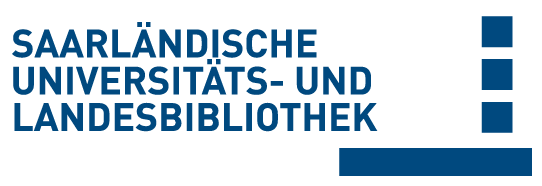Bitte benutzen Sie diese Referenz, um auf diese Ressource zu verweisen:
doi:10.22028/D291-37943 | Titel: | Problematic Internet Use among Adolescents 18 Months after the Onset of the COVID-19 Pandemic |
| VerfasserIn: | Paulus, Frank W. Joas, Jens Gerstner, Ida Kühn, Anna Wenning, Markus Gehrke, Thomas Burckhart, Holger Richter, Ulf Nonnenmacher, Alexandra Zemlin, Michael Lücke, Thomas Brinkmann, Folke Rothoeft, Tobias Lehr, Thorsten Möhler, Eva |
| Sprache: | Englisch |
| Titel: | Children |
| Bandnummer: | 9 |
| Heft: | 11 |
| Verlag/Plattform: | MDPI |
| Erscheinungsjahr: | 2022 |
| Freie Schlagwörter: | problematic internet use internet addiction COVID-19 pandemic emotional dysregulation adolescent |
| DDC-Sachgruppe: | 500 Naturwissenschaften 610 Medizin, Gesundheit |
| Dokumenttyp: | Journalartikel / Zeitschriftenartikel |
| Abstract: | Studies in recent years and especially since the beginning of the COVID-19 pandemic have shown a significant increase in the problematic use of computer games and social media. Adolescents having difficulties in regulating their unpleasant emotions are especially prone to Problematic Internet Use (PIU), which is why emotion dysregulation has been considered a risk factor for PIU. The aim of the present study was to assess problematic internet use (PIU) in adolescents after the third wave (nearly 1.5 years after the onset in Europe) of the COVID-19 pandemic. In the German region of Siegen-Wittgenstein, all students 12 years and older from secondary-level schools, vocational schools and universities were offered a prioritized vaccination in August 2021 with an approved vaccine against COVID-19. In this context, the participants filled out the Short Compulsive Internet Use Scale (SCIUS) and two additional items to capture a possible change in digital media usage time and regulation of negative affect due to the COVID-19 pandemic. A multiple regression analysis was performed to identify predictors of PIU. The original sample consisted of 1477 participants, and after excluding invalid cases the final sample size amounted to 1268 adolescents aged 12–17 (x = 14.37 years, SD = 1.64). The average prevalence of PIU was 43.69%. Gender, age, digital media usage time and the intensity of negative emotions during the COVID-19 pandemic were all found to be significant predictors of PIU: female gender, increasing age, longer digital media usage time and higher intensity of negative emotions during the COVID-19 pandemic were associated with higher SCIUS total scores. This study found a very high prevalence of PIU among 12- to 17-year-olds for the period after the third wave of the COVID-19 pandemic, which has increased significantly compared to pre-pandemic prevalence rates. PIU is emerging as a serious problem among young people in the pandemic. Besides gender and age, pandemic-associated time of digital media use and emotion regulation have an impact on PIU, which provides starting points for preventive interventions. |
| DOI der Erstveröffentlichung: | 10.3390/children9111724 |
| Link zu diesem Datensatz: | urn:nbn:de:bsz:291--ds-379438 hdl:20.500.11880/34298 http://dx.doi.org/10.22028/D291-37943 |
| ISSN: | 2227-9067 |
| Datum des Eintrags: | 11-Nov-2022 |
| Fakultät: | M - Medizinische Fakultät NT - Naturwissenschaftlich- Technische Fakultät |
| Fachrichtung: | M - Neurologie und Psychiatrie M - Pädiatrie NT - Pharmazie |
| Professur: | M - Dr. med. Eva Möhler M - Prof. Dr. Michael Zemlin NT - Prof. Dr. Thorsten Lehr |
| Sammlung: | SciDok - Der Wissenschaftsserver der Universität des Saarlandes |
Dateien zu diesem Datensatz:
| Datei | Beschreibung | Größe | Format | |
|---|---|---|---|---|
| children-09-01724.pdf | 1,29 MB | Adobe PDF | Öffnen/Anzeigen |
Diese Ressource wurde unter folgender Copyright-Bestimmung veröffentlicht: Lizenz von Creative Commons


